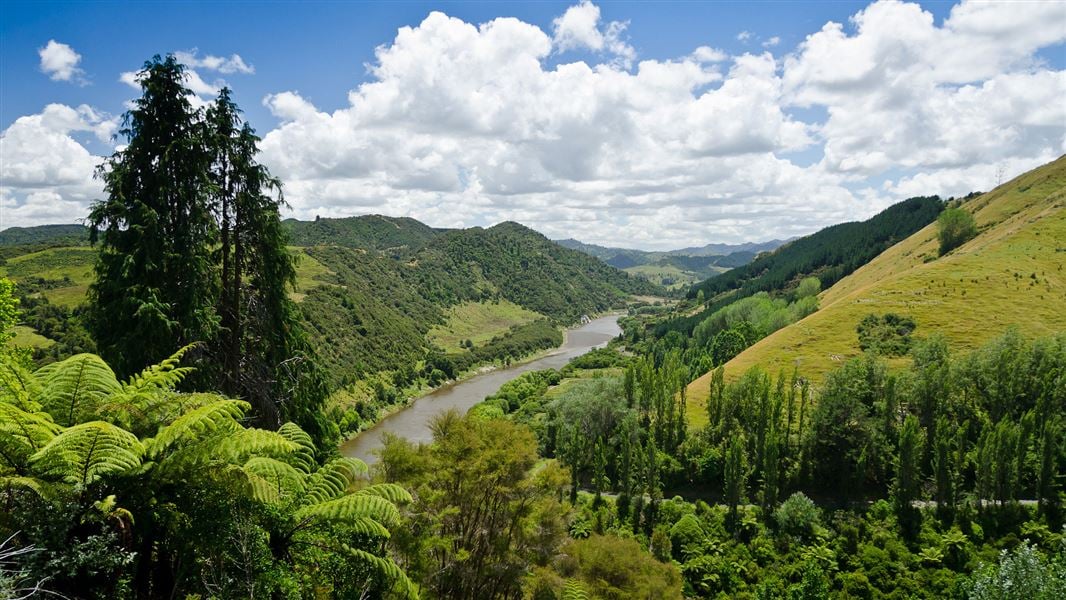Tramping tracks through wild lowland forests and river trips down the mighty Whanganui are popular activities. The area has a unique history and Māori culture is an important part of the park experience.
Dog access
No dogs. Other pets on conservation land rules.
Image gallery
Nature's in trouble
Thousands of New Zealand’s native species are heading towards extinction. Once they’re gone, they’re gone for good. Nature needs your help.
The park is located in the central North Island with the township of Taumarunui to the north and Wanganui to the south. The small towns of Pipiriki, Ohinepane, and Whakahoro are main gateways to the river itself.
Roads lead into the park from all directions. Some give access to main track systems, others directly to the river. There are regular bus services to Taumarunui and Wanganui. A number of companies run on demand shuttles to the start of tracks and organise car shuttles for people canoeing the river.
If you are planning a trip down the river, make sure you are properly equipped.
Every one needs to take: a life-jacket, sleeping bag, waterproof clothing, warm woollen or pile clothing, changes of clothing and shoes, sufficient food and drink for the journey (plus an extra day's supply), sun-cream, sunglasses, sunhat and a warm hat. Equipment you will need as a group includes: cooking equipment , fuel, a lighter, first aid kit, plastic drums (or equivalent) for food and dry clothes, tents (spaces in huts may already be taken), a spare paddle, rope and string and spare plastic bags.
For further information purchase the 'Guide to the Whanganui River' published by the New Zealand Canoeing Association. It is available from good bookshops as well as local DOC offices for around $8.00 and gives all the information you need, detailed maps of each section of the river and descriptions of each rapid.
Weather forecast
Whanganui National Park protects one of the largest remaining tracts of lowland forest remaining in the North Island, and provides habitat for a wide variety of native wildlife. Read about nature in Whanganui National Park.
During World War 1, the government offered land in the Mangapurua and Kaiwhakauka valleys to returned servicemen as part of a soldier settlement scheme. The Bridge to Nowhere was built to support this settlement, but was abandoned shortly after together with the settlement. Today it symbolises a failed attempt at backcountry pioneering. Read about the Bridge to Nowhere.
Māori culture is an important part of the history of Whanganui National Park. Read about the Māori culture of this area.
DOC Customer Service Centre
| Phone: | 0800 275 362 |
| Email: | whanganui@doc.govt.nz |
| Address: | Whanganui Office |

